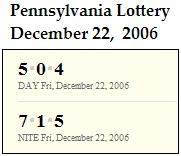Last night's post on The Trinity of Max Black and the use of
the term "eightfold" by the Mathematical Sciences Research Institute
at Berkeley suggest a review of an image from Sept. 22, 2011—

The triskele detail above echoes a Buddhist symbol found,
for instance, on the Internet in an ad for meditation supplies—

Related remarks—
http://www.spencerart.ku.edu/about/dialogue/fdpt.shtml—
Mary Dusenbury (Radcliffe '64)—
"… I think a textile, like any work of art, holds a tremendous amount of information— technical, material, historical, social, philosophical— but beyond that, many works of art are very beautiful and they speak to us on many layers— our intellect, our heart, our emotions. I've been going to museums since I was a very small child, thinking about what I saw, and going back to discover new things, to see pieces that spoke very deeply to me, to look at them again, and to find more and more meaning relevant to me in different ways and at different times of my life. …
… I think I would suggest to people that first of all they just look. Linger by pieces they find intriguing and beautiful, and look deeply. Then, if something interests them, we have tried to put a little information around the galleries to give a bit of history, a bit of context, for each piece. But the most important is just to look very deeply."
http://en.wikipedia.org/wiki/Nikaya_Buddhism—
According to Robert Thurman, the term "Nikāya Buddhism" was coined by Professor Masatoshi Nagatomi of Harvard University, as a way to avoid the usage of the term Hinayana.[12] "Nikaya Buddhism" is thus an attempt to find a more neutral way of referring to Buddhists who follow one of the early Buddhist schools, and their practice.
12. The Emptiness That is Compassion:
An Essay on Buddhist Ethics, Robert A. F. Thurman, 1980
[Religious Traditions , Vol. 4 No. 2, Oct.-Nov. 1981, pp. 11-34]
http://dsal.uchicago.edu/cgi-bin/philologic/getobject.pl?c.2:1:6.pali—
Nikāya [Sk. nikāya, ni+kāya]
collection ("body") assemblage, class, group
http://en.wiktionary.org/wiki/नि—
Sanskrit etymology for नि (ni)
Prefix
नि (ni)
http://www.rigpawiki.org/index.php?title=Kaya—
Kaya (Skt. kāya ; སྐུ་, Tib. ku ; Wyl. sku ) —
the Sanskrit word kaya literally means ‘body’
but can also signify dimension, field or basis.
སྐུ། (Wyl. sku ) n. Pron.: ku
• structure, existentiality, founding stratum ▷HVG KBEU
• gestalt ▷HVG LD
Note that The Trinity of Max Black is a picture of a set—
i.e., of an "assemblage, class, group."
Note also the reference above to the word "gestalt."
"Was ist Raum, wie können wir ihn
erfassen und gestalten?"
— Walter Gropius







 or ‘circumincessio,’ is perhaps the deepest and darkest corner of the whole theological abyss.”
or ‘circumincessio,’ is perhaps the deepest and darkest corner of the whole theological abyss.”
